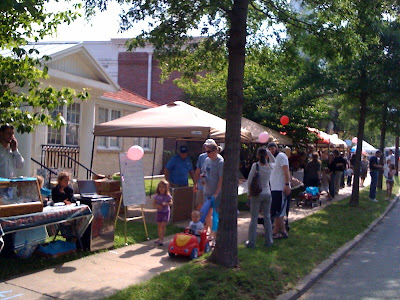Lard made from
pastured hogs is an excellent source of Vitamin D. The only real food better for Vitamin D is fermented cod liver oil.
Why do we need this vitamin? It is crucial for the immune system, keeping inflammation at bay, calcium absorption, and decreasing the risk for chronic illnesses. Acquiring it in a whole food form (instead of synthetic) is the body's best way of absorbing it.
Not all lard is created equal. I do not buy hydrogenated lard from the grocery store. Hydrogenated fats are bad, bad bad. Home rendered lard is a good fat.
Some friends of mine are buying 1/2 a hog from a farmer, and I encouraged them to ask for the fat back so they could make lard. You can also obtain fat back from a meat market; however, you will not be sure of the farmer's husbandry standards or if the hog had access to sunlight (which makes vitamin D in the hog's fat).
This is a quick picture tutorial on how I rendered lard.
First, cut it into equal(ish) sized cubes. Mine were about 2 inches square. Emphasis on
about. Rendering lard is not difficult nor an exact science. The hardest thing about rendering lard is being patient because done right it is rendered slowly.
After cutting in equal pieces, plop it in a big pot. I think I had about 5 pounds.
Turn your stovetop on about 3, on a scale of 10. The lower the temperature, the less likely it is to taste "porky." A lower temperature also takes longer.
At first, you will need to tend to the lard with frequency. You don't want the fat to stick to the bottom of the pan. Stirring every few minutes is a good thing.
Once there's enough fat melted, it is not as important to stir frequently.
As time elapses, the fat back shrinks and the volume of liquid lard increases. The hot lard appears golden yellow.
In the picture above, the fat back had been melting for about 8 hours and I was ready to go to bed. If I'd started it earlier in the day, I would not have wasted so much - and the floating fat back pieces would have been smaller.
When you're ready to declare yourself finished, carefully pour the hot lard through a strainer. I used a paper towel to catch the pork pieces. Some people like to bake these till crispy and eat them on a salad. They are quite tasty. I was ready to go to bed, so I just thew it away. (Side note: if you're a Little House on the Prairie fan, Laura writes about begging her mother for these pieces. To which her mother replied something like, "Oh they are too rich for children." Translation: I want it all to myself! :)
Once the lard cools, it will be a lovely white color. I store the jars in my fridge or freezer for at least six months. By then, I've used it all -
frying my falafel in it, making tortillas, frying potatoes, making pie crusts, or biscuits. Five pounds of fat back rendered
about 2 quarts of lard.
-Julie
Related links:

























